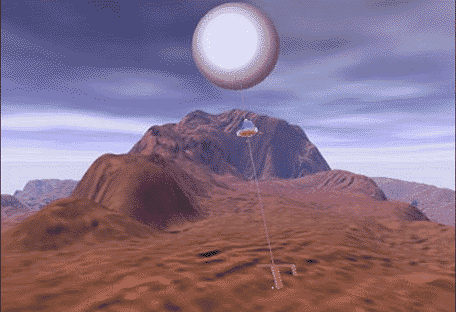It is not clear when the balloon will be flown to Mars, depending on NASA's budget

Global Aerospace, a NASA subcontractor, has developed a system that can be used both as a satellite and as a weather balloon. The system, called Stratosail was developed as a means of raising weather balloons to the edge of space. However, this system is about to conduct its experiment in an unexpected place - on the planet Venus. The CEO of the company, Dr. Alexey Penkin, decided to build a Nougat version of DARE - Directed Aerial Robot Explorer
With DARE we can carry out atmospheric studies and also place a camera", Pankin says. Smaller vehicles can be lowered from it and chemical analyzes of the ground surface can be performed. Or alternatively these vehicles could also be small SUVs or small planes that could go out, fly in circles and return to the balloon.
In 1985, the Soviet spaceships Vega 1 and 2 arrived at the Moon, landing balloons into the thick cloud layer. These balloons survived 56 minutes and 46.5 minutes respectively. The spacecraft picked up strong winds and currents that pulled them down. In any case, these balloons were completely unmaneuverable and at the mercy of the hostile environment, they did not contain cameras or additional vehicles inside them and they could not be directed to fly over specific areas. "The biggest difference between DARE and conventional balloons is that their lifespan will be hundreds of days," Pankin says. "And they will not be at the mercy of the spirits."
The planet closest to us is an enigma in itself. Besides its proximity to the sun, it has a day longer than its year - meaning that the lit side receives all the sunlight for 122 earth days and then enters darkness of a similar length. The atmosphere consists of carbon dioxide mixed with sulfuric acid, which trap the heat and create the greenhouse effect.
The landscape first revealed to the radars of the Venera spacecraft in 1983 seems relatively new. The surface is regenerated. "We want to understand the surface, they are certainly very young because we haven't seen too many craters. The number of craters indicates the age of the surface, and the moon, exposed without an atmosphere, contains many craters." It is not yet clear when NASA plans to launch the new balloon to Venus.
